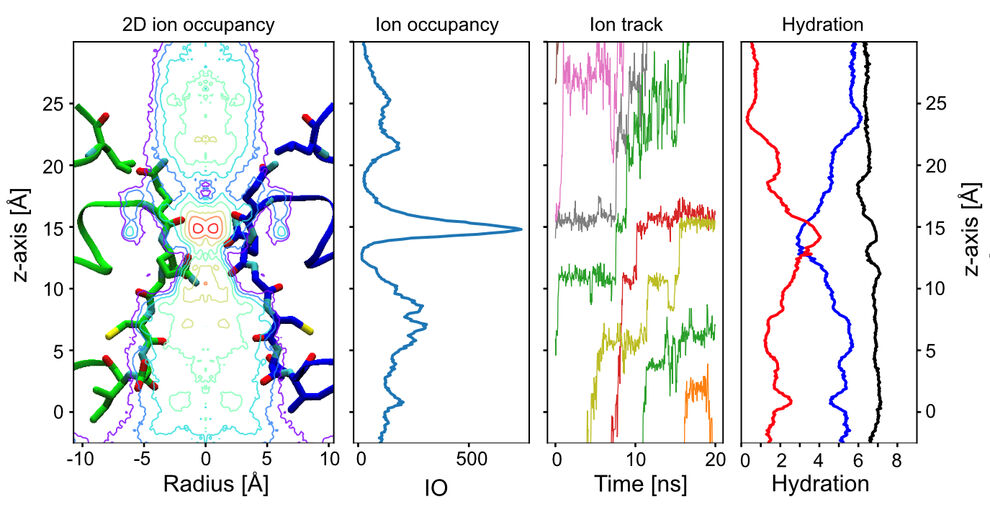Ion Permeation in Potassium Selective and Non-selective Cation Channels
Despite a common architecture, certain tetrameric ion channels have evolved to select between different cations with high specificity, whereas others are barely selective. The dynamics and chemistry of these diverse permeation characteristics remain poorly understood for vertebrate ion channels. We propose to examine ion transport in such channels that have essential roles in cognition, sensory transduction, and cardiac rhythm, with a closely-knit combination of molecular dynamics simulations and functional experiments. In the AMPA-type glutamate receptor, we will examine Ca2+ permeation and block, a biologically critical process in the vertebrate brain.
We will use recently introduced AMBER- and CHARMM-compatible parameters for Ca2+ ions. We will validate these results with quantum mechanics/molecular mechanics (QM/MM) simulations. Like the AMPA channel, the cyclic nucleotide-gated (CNG) channel is non-selective among monovalent cations. Our previous work in the bacterial NaK channel has revealed that K+-conduction requires a 4-fold symmetric selectivity filter (SF), while an asymmetric filter was observed in Na+-conducting simulations. We will investigate whether the same mechanism also applies to the CNG channel, a crucial component of the visual transduction pathway. A putative open structure of the CNG channel has now become available by cryo-electron microscopy, enabling us to directly simulate K+ and Na+ permeation in the CNG channel.
In our final aim, we will probe the relationship between structural symmetry in the ion SF and Na+/K+ selectivity in K2P channels. The TWIK-1 channel is a unique K2P channel with variable ion selectivity, which is expected to impact cardiac excitability under hypokalemia. Compared to other K2P channels, it has a highly asymmetric filter and non-canonical filter sequence. A point mutation in the SF of the TREK-1 channel, resulting in a similar asymmetric filter, introduces aberrant sodium permeability. Within this project, we will investigate the mechanism of variability in the ion selectivity of TWIK-1 and the TREK-1 mutant, its reversion by the small molecule BL-1249, and its correlation to symmetry and dynamics of the SF.

Prof. Dr. Andrew Plested
Humboldt-Universität zu Berlin
Lebenswissenschaftliche Fakultät
Institut für Biologie
Invalidenstraße 110
10115 Berlin
Dr. Han Sun
13125 Berlin

